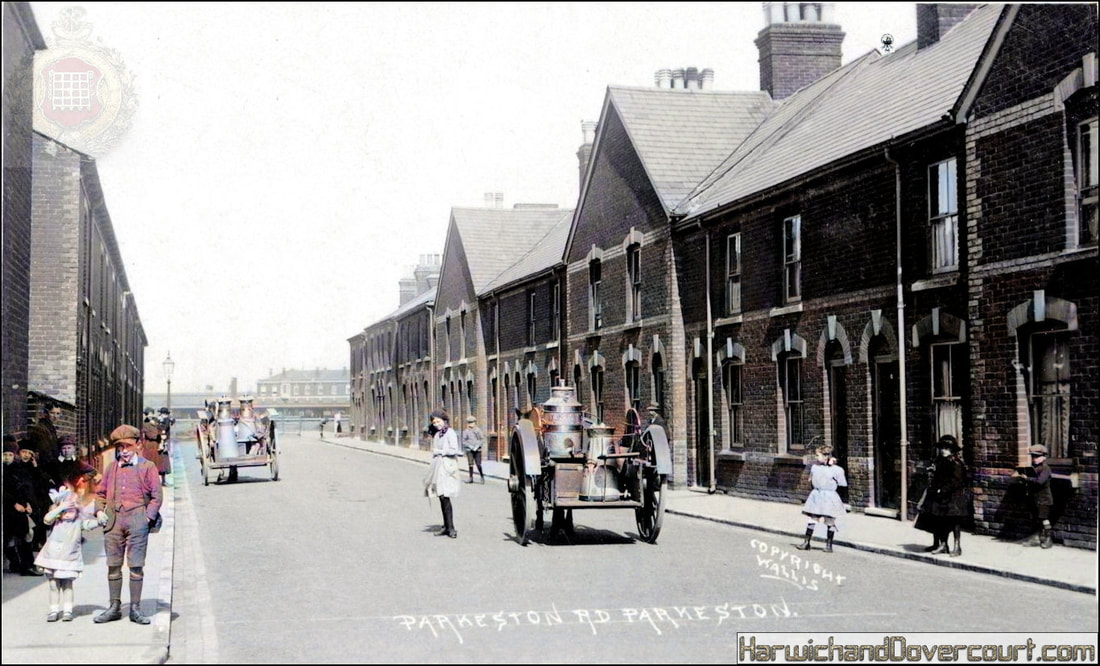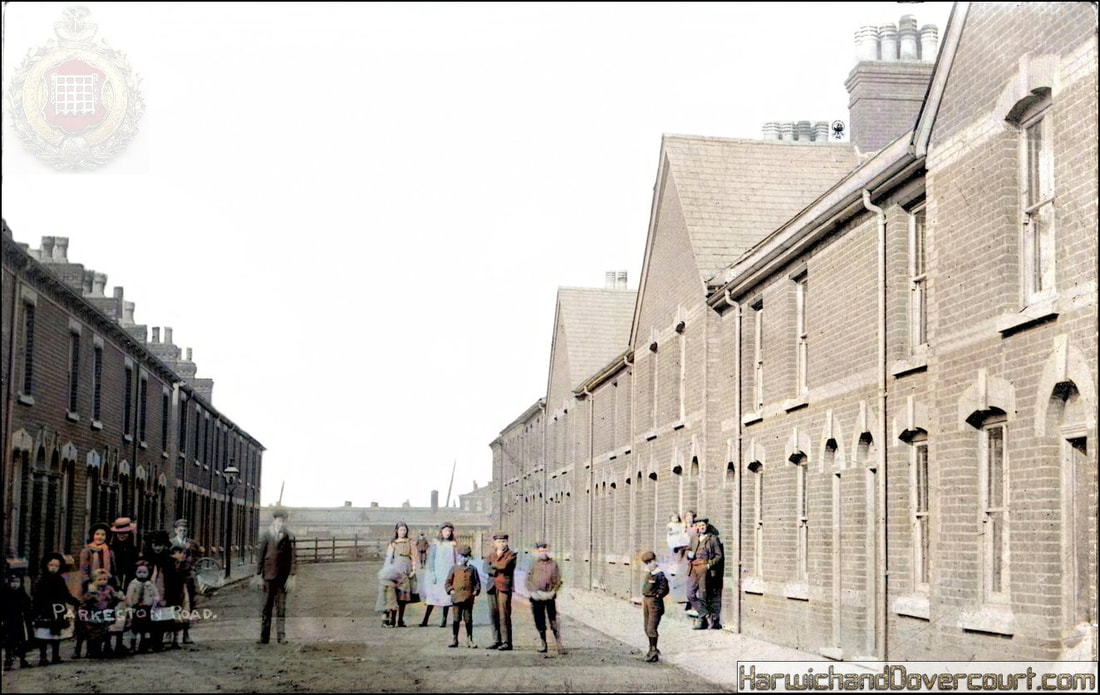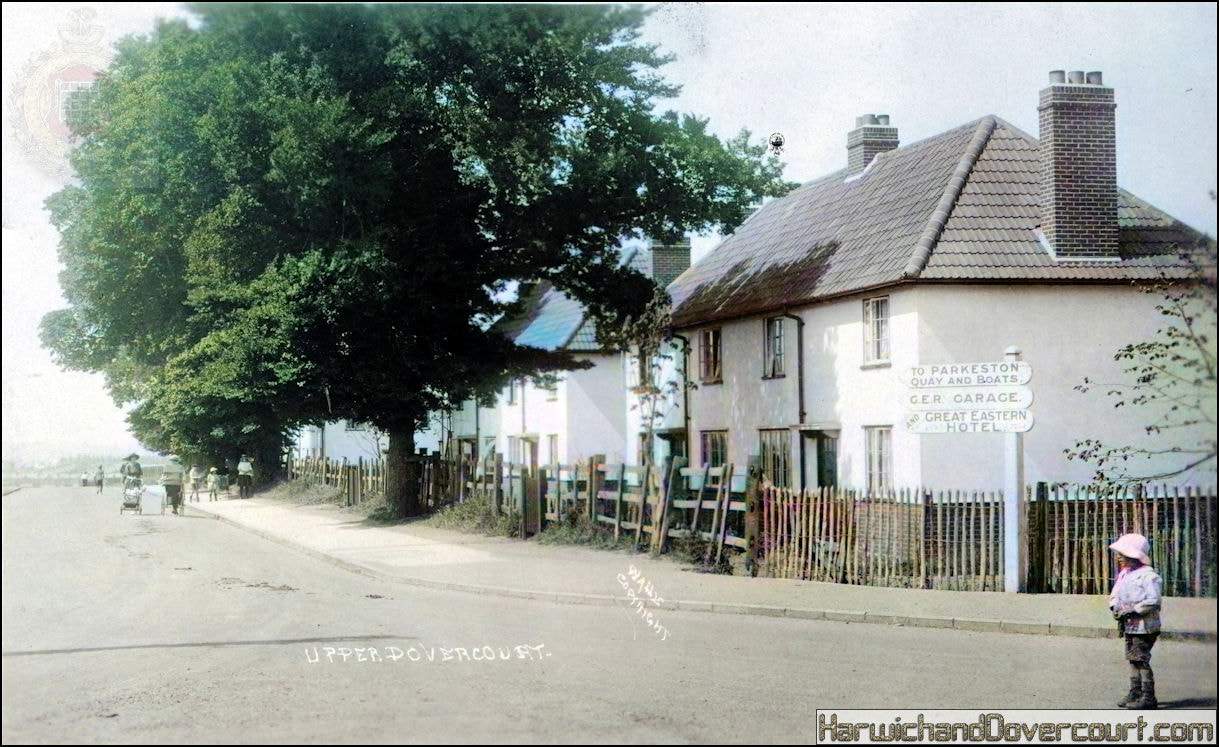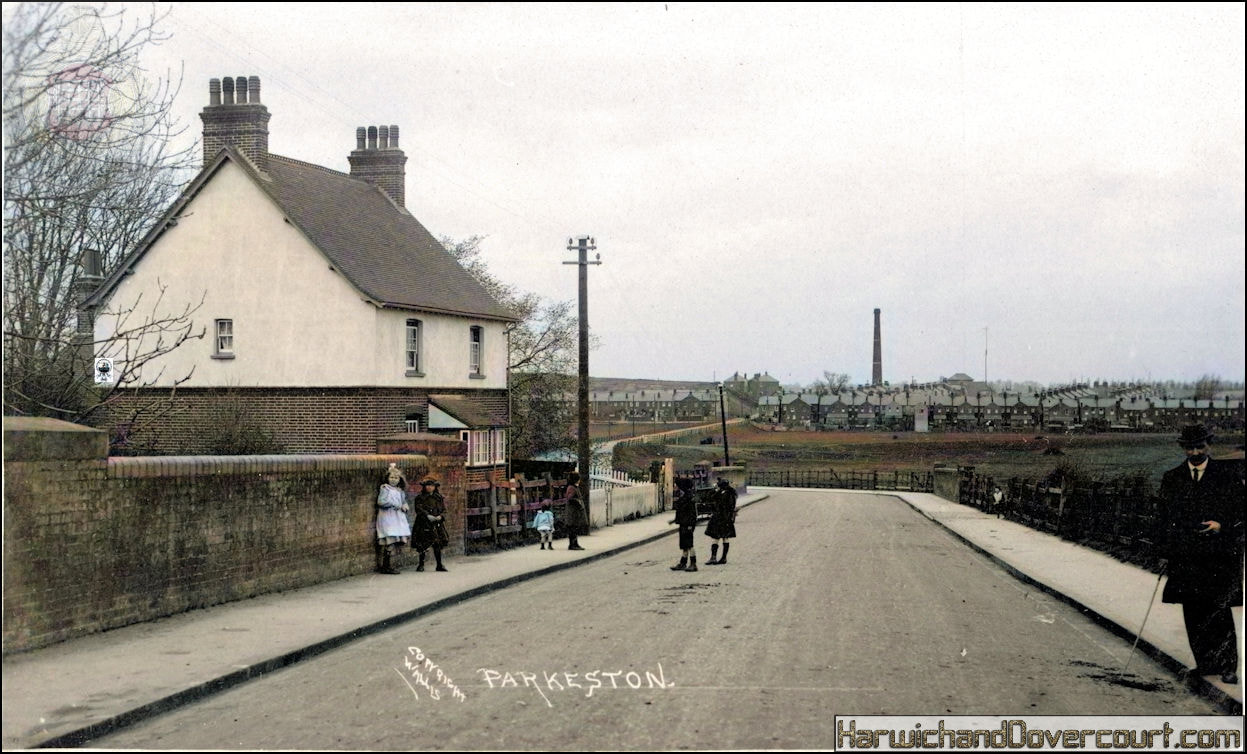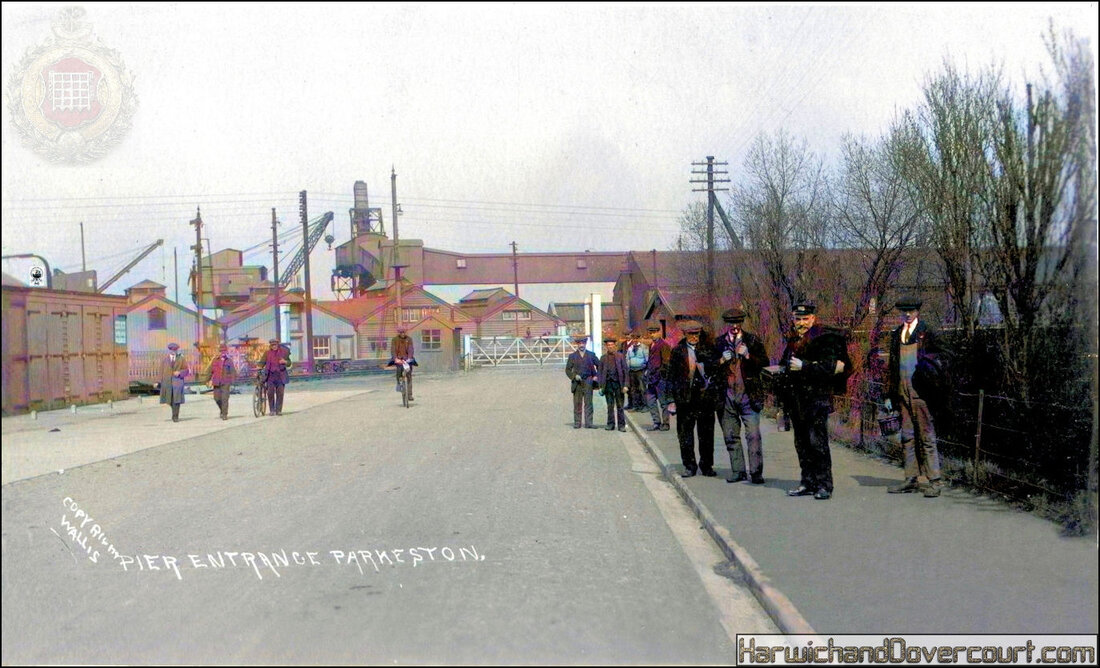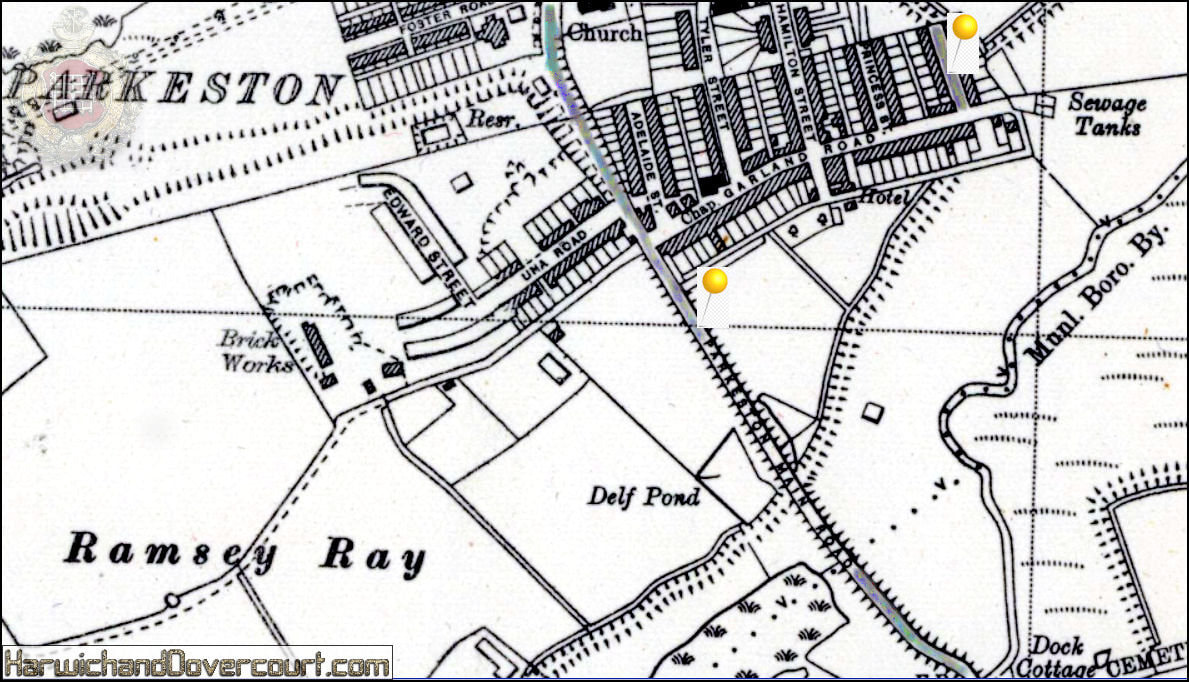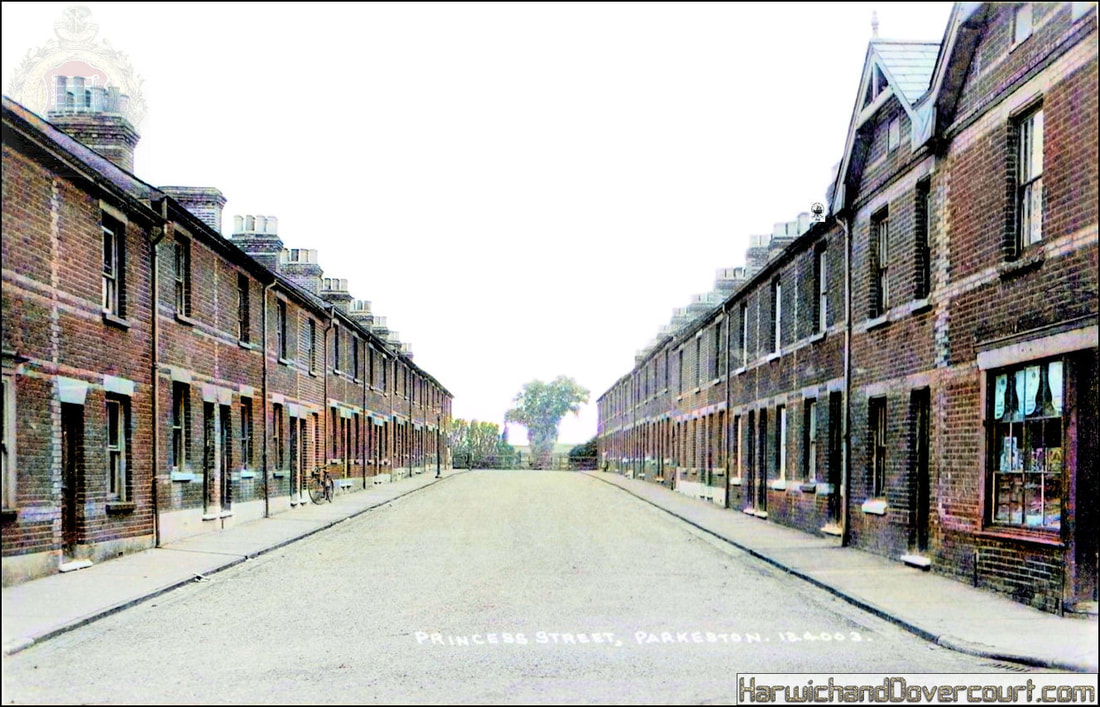Avenues, Roads, Streets & Properties in Parkeston, Essex, England.
Parkeston Road, Parkeston, Essex
Parkeston Road, Parkeston, Essex (1920) Wallis H&D FW
Parkeston Road, Parkeston, Essex (1920) by Frank Wallis CO12 4PD
Local photographer Frank Wallis, captured some amazing scenes in the early part of the 20th Century and these three examples cover some of the residential areas in Parkeston Village, Essex.
The development of Parkeston was aided by Edgar Walter Garland, who was both Squire and Landowner, Edgar lived at Michaelstowe Hall and sold the land to the Great Eastern Railway in order to build the Quay and village.
This postcard of Parkeston Road, is within the village (located at the end of Garland Road, as opposed to the other Parkeston Road, running off Main Road, Dovercourt) The busy scene is depicted by multiple milk carts, residents and children posing for the photographer, against a backdrop of Parkeston Quay and the Station, sadly this view is presently obscured from the road.
The Garland's link with Michaelstowe Hall ended in 1920, when the 2,250 acres of the Michaelstowe estate were put up for sale by auction by Hampton and Sons at the Corn Exchange in Colchester. The estate at that time owned land and farms across Bradfield, Wrabness and Ramsey as well as the Dovercourt Golf Course and obviously the Garland Hotel in Parkeston.
Local photographer Frank Wallis, captured some amazing scenes in the early part of the 20th Century and these three examples cover some of the residential areas in Parkeston Village, Essex.
The development of Parkeston was aided by Edgar Walter Garland, who was both Squire and Landowner, Edgar lived at Michaelstowe Hall and sold the land to the Great Eastern Railway in order to build the Quay and village.
This postcard of Parkeston Road, is within the village (located at the end of Garland Road, as opposed to the other Parkeston Road, running off Main Road, Dovercourt) The busy scene is depicted by multiple milk carts, residents and children posing for the photographer, against a backdrop of Parkeston Quay and the Station, sadly this view is presently obscured from the road.
The Garland's link with Michaelstowe Hall ended in 1920, when the 2,250 acres of the Michaelstowe estate were put up for sale by auction by Hampton and Sons at the Corn Exchange in Colchester. The estate at that time owned land and farms across Bradfield, Wrabness and Ramsey as well as the Dovercourt Golf Course and obviously the Garland Hotel in Parkeston.
Parkeston Road, Essex (1907) Unknown Publisher H&D FW
Parkeston Main Road, Parkeston, Essex
Upper Dovercourt (Parkeston Road) Essex (1913) by Wallis H&D C III FW
Parkeston Hill, the main road into Parkeston Village, Essex (1921) Wallis H&D FW
#124011 Parkeston Main Road, Parkeston (1929) by Bells H&D FW
The Pier Entrance, Parkeston Road, Parkeston, Essex (1922) Wallis H&D FW
1938 O.S. Maps with Pins, marking the two "Parkeston Roads"
#124003 Princess Street, Parkeston, Essex (1929) Bells H&D FW
#124003 Princess Street, Parkeston (1929) Bells Photography
Yet another road in Parkeston, Essex that is connected to the Great Eastern Railway Company, with the road being built in the 1880’s and named after the paddle steamer P.S. “Princess of Wales” .The steamer was a passenger vessel built for the Great Eastern Railway in 1878, by the London and Glasgow Engineering and Iron Shipbuilding Company.
On the 4th February 1878, she was launched by Miss Isabel Adams, daughter of the Locomotive Superintendent of the Great Eastern Railway Company and named after the Princess of Wales, Alexandra of Denmark.
She was placed on the Harwich to Rotterdam and Antwerp route and broken up in 1896.
Yet another road in Parkeston, Essex that is connected to the Great Eastern Railway Company, with the road being built in the 1880’s and named after the paddle steamer P.S. “Princess of Wales” .The steamer was a passenger vessel built for the Great Eastern Railway in 1878, by the London and Glasgow Engineering and Iron Shipbuilding Company.
On the 4th February 1878, she was launched by Miss Isabel Adams, daughter of the Locomotive Superintendent of the Great Eastern Railway Company and named after the Princess of Wales, Alexandra of Denmark.
She was placed on the Harwich to Rotterdam and Antwerp route and broken up in 1896.
